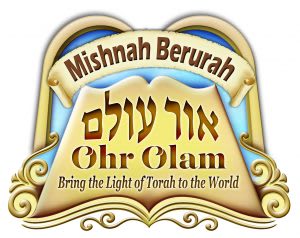Clapping and Dancing on Shabbos

Question: Why did the Rabbis restrict clapping and dancing on Shabbos and Yom Tov?
Discussion: The Talmud164 records that the Rabbis prohibited playing musical instruments on Shabbos and Yom Tov because musical instruments often need to be tuned, a potential violation of the Shabbos Labor of Makkeh b’patish.165 Not only did they prohibit all diverse types of musical instruments, but they also included all other noise-making objects, such as bells, whistles and rattles.166
The Rabbis of the Talmud167 went even further. They decreed that certain actions which could lead to the playing of musical instruments should also be restricted, even if now there are no musical instruments present or even available. Apparently, they were concerned that such an atmosphere could lead a creative individual to forget that it is Shabbos, and fashion a makeshift musical instrument on the spot.168 Thus they banned clapping and dancing as well, since these are activities which generate an atmosphere in which music is played.
Question: Nowadays, does the Rabbinic injunction against clapping and dancing on Shabbos and Yom Tov still apply?
Discussion: While all authorities agree that the original edict against playing any kind of musical instrument remains in effect nowadays,169 there are conflicting opinions whether the additional decree against clapping and dancing is also in effect. Some rishonim argue that nowadays we no longer have the ability or talent to fashion a musical instrument on the spot, so we should not prohibit activities that could lead to the fashioning of musical instruments.170 Others hold that the original Rabbinic decree applied only to dance movements which required musical accompaniment, not to the unstructured and informal circle dancing popular today.171 For whatever reason, the fact remains that it became customary for people to clap and dance on Shabbos and Yom Tov, and the poskim did not categorically object to this behavior.172 While it behooves a ba’al nefesh (a person who is especially meticulous in his mitzvah observance) to refrain from clapping and dancing173 on Shabbos and Yom Tov (except for Simchas Torah174) — especially for non-mitzvah purposes175 — and many people are careful about it,176 the basic halachah [for ashkenazim] follows the opinion of the poskim who hold that nowadays, the Rabbinic decree against clapping and dancing177 is no longer applicable.178
Question: When the Rabbis restricted clapping on Shabbos and Yom Tov, was applauding also included?
Discussion: No, it was not. The original injunction against clapping only included clapping to a specific rhythm or beat, since that type of clapping may lead to the fashioning of musical instruments. Applause, clapping to wake someone from his sleep or any other type of clapping not done to a specific rhythm, is permitted.179 The same halachah applies to banging on a table top with one’s fist or fingers; if it is done to silence a crowd or catch someone’s attention, it is permitted, since it is not a rhythmic beat.
Beating on the table top to a specific beat, however, is included in the Rabbinic injunction against clapping and dancing and should be avoided. Moreover, perhaps even those who are lenient with dancing and clapping nowadays should be more stringent with drumming with their hands on a table, since the table is being used as a drum, and all opinions agree that playing musical instrument on Shabbos is forbidden even nowadays.
Similarly, tapping a bottle or a glass with a spoon or a fork to a specific rhythm or beat should be avoided by everyone, since this is similar to using non-musical instruments (such as a rattle) to produce a musical sound, and may have been included in the original injunction against playing musical instruments which applies nowadays as well according to all opinions.180
164. Eiruvin 104a.
165. As explained by Rambam, Hilchos Shabbos 23:4.
166. Rama, O.C. 338:1.
167. Beitzah 30a.
168. As explained by Sha’ar Efrayim, O.C. 36, quoted in Minchas Elazar 1:29.
169. Beiur Halachah 339:3, s.v. lehakel.
170. Tosafos, Beitzah 30a. See also Ritva, Shabbos 148b.
171. Aruch ha-Shulchan 339:9; Lev Avraham 42.
172. Rama, O.C. 338:2; 339:3.
173. Clapping with a shinui is permitted according to all opinions; O.C. 339:3; Mishnah Berurah 338:1.
174. Mishnah Berurah 339:8.
175. Mishnah Berurah 339:10. See also Sha’ar ha-Tziyun 426:12 who seems to permit dancing for a timely mitzvah that cannot be rescheduled.
176. Kaf ha-Chayim 339:13-14 and Yechaveh Da’as 2:58. See also Shevet ha-Levi 4:37.
177. Certainly, merely walking around in a circle while singing is permissible according to all views; Devar Yehoshua 2:42-4; Shulchan Shelomo 524:4, note 3; Yechaveh Da’as 2:58 (footnote).
178. Minchas Elazar 1:29; Igros Moshe, O.C. 2:100. Even those who do not dance on Shabbos are permitted to do so during bein ha-shemashos; Eishel Avraham, Tanina, O.C. 299:10.
179. Mishnah Berurah 338:1, 339:9; Shemiras Shabbos K’hilchasah 28:42.
180. Based on Beiur Halachah 339:3, s.v. lehakel.
